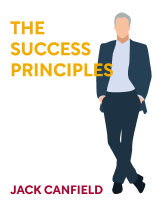

This article is an excerpt from the Shortform book guide to "The Success Principles" by Jack Canfield. Shortform has the world's best summaries and analyses of books you should be reading.
Like this article? Sign up for a free trial here .
What is crowdfunding and how does it work? What are the best websites to crowdfund a project or a business venture?
Crowdfunding is a way of raising money for a project or a business venture from a large number of people, each contributing a small amount. Typically, crowdfunding is done on the crowdfunding internet platforms such as indiegogo and seedinvesttechnology.
So what is crowdfunding and how does it work? Read more about tips and strategies to effectively raise money through crowdfunding and familiarize yourself with different crowdfunding platforms.
What is Crowdfunding?
What is crowdfunding and how does it work?
Crowdfunding means giving money to people, causes, or companies you care about. Companies and individuals around the world have used crowdfunding campaigns to fund all kinds of endeavors, such as launching new companies or products, or creating documentaries. In 2010, crowdfunding generated $89 million; by 2013, it generated $5 billion, an amount expected to double every two years.
Here are four crowdfunding strategies:
- Use video to tell your story. As we discussed in Principles 64-65, video is one of the best ways to engage your audience. It allows you to share your passion in a direct way. Campaigns that used video on Kickstarter, one of the largest crowdfunding websites, are successfully funded 50 percent of the time compared to just 30 percent of campaigns without a video. Plus, campaigns with a video tend to raise more money. However, one of the biggest mistakes is describing a need but failing to ask for money. Make sure you have a clear message describing why you need money and how you’ll use it.
- Encourage engagement. This could mean friends, relatives, and colleagues contributing and sharing the story, or people blogging about your campaign. Before you launch, create a group of supporters who will contribute immediately to create momentum.
- Reward donors. Assemble a dedicated team of people who can do tasks like thanking donors and share regular updates on your progress. Contributors to fundraising campaigns tend to follow updates. Creating a regular schedule of when you’ll update and sticking to it will encourage regular contributions. Also, create tiered rewards for different contributions, and make sure that your product is included as a reward. Thank everyone who contributes to your campaign at least twice. Repeated thanks may encourage people to support future campaigns.
- Reassure people that you can finish the job. Updates are opportunities to reinforce your credibility by reassuring people that you’re making progress toward delivering the finished product or result. Another tip: Express gratitude for those on your team during updates. This helps people empathize with you and your experience as you progress.
Crowdfunding Websites
Crowdfunding websites include:
- Kickstarter.com. Kickstarter is the best-known crowdfunding site. It was originally intended for people in the arts, but is used widely by tech entrepreneurs and inventors. Canfield recommends looking at the campaign for the “Coolest Cooler,” which includes features such as a rechargeable battery for its portable margarita blender and waterproof Bluetooth speakers. At the time of Canfield’s writing, the campaign had raised $10,056,281, much higher than its original $50,000 ask. (Shortform note: The Coolest Cooler company folded in late 2019 without delivering the promised product to one-third of backers. The campaign is still available to view on Kickstarter.)
- GoFundMe.com. GoFundMe helps people raise money for everything from tuition to business ventures and travel. Chandra Starr, a 13-year-old whose family had experienced homelessness, used the platform to raise money to create vegetable gardens where people without housing could access fresh food. She raised $14,500, $4,500 more than her initial goal.
- Indiegogo.com. Indiegogo allows you to raise money for anything and offers two options for collecting the cash: Use its “keep what you raise” method to take whatever money comes in for a fee, even if you don’t meet your goal, or pay less in fees and keep what you raise only if you meet your goal.
- Fundable.com. Fundable offers two options for raising money: Raise venture capital from verified investors with a net worth of at least $1 million, or take contributions from donors in exchange for rewarding them with the product or service you eventually offer.
- Crowdrise.com. This site is designed for anyone to raise money for a nonprofit that they care about. The charity just needs to be registered on the site.
- StartSomeGood.com. StartSomeGood is for organizations that are looking to raise money for nonprofit endeavors but don’t have 501(c)(3) status yet.
- Causes.com. This site allows people to invest in nonprofits. Contributions are tax-deductible.
Crowdfunding Success: Pebble’s Story
Eric Migicovsky wanted to raise venture capital to fund the creation of a smartwatch that could display messages users received from their smartphones. When no one wanted to back him, he used Kickstarter with the goal of raising $100,000. Migicovsky and his team created a tiered rewards system for donors so that anyone donating $115 would get a watch when it became available, a discount from the $150 they planned to sell it for. The campaign reached its $100,000 goal within two hours of going live, and a little over a month later, they had raised $10,266,844. They also created a video expressing their passion but lack of money. The video was honest and earnest, convincing people to contribute.
Crowdsourcing 101
In contrast to crowdfunding, crowdsourcing is tapping into your network to find people, services, or other resources. With the internet at your fingertips, it’s easier than ever to search for these resources and use them to your advantage. For example, Robert Kiyosaki, author of Conspiracy of the Rich, wrote the book’s introduction first and posted it on social media to ask his followers what topics they hoped he’d cover in the book. In this way, he used the Internet to generate interest in his book and learn what would be most useful to his audience.
Another example of crowdsourcing is gig economy services like Uber. Customers who use Uber’s app can hail a ride, similar to hailing a taxi, except these drivers don’t work for a specific taxi cab service—they’re just locals who have become drivers for Uber’s company. In this way, Uber effectively crowdsources others’ work to achieve its objective of providing ready access to taxi-like service.
You can also crowdsource other services you might need for your business. For example, websites like Fiverr and Elance can connect you with freelance professionals for help with one-time projects, such as proofreading or editing your marketing materials.

———End of Preview———
Like what you just read? Read the rest of the world's best book summary and analysis of Jack Canfield's "The Success Principles" at Shortform .
Here's what you'll find in our full The Success Principles summary :
- The 67 principles to help anyone achieve their goals and dreams
- Why achieving your goals requires you to invest your time and effort
- How to take responsibility for your own life






